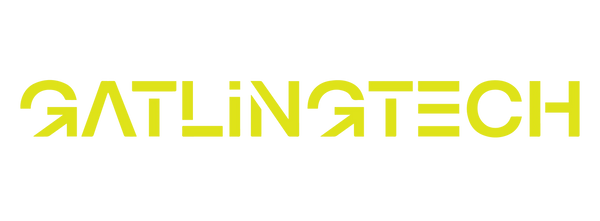5 ปัจจัยที่มีผลต่อราคาเครื่องฉีดน้ำแรงดันและวิธีประหยัดอย่างชาญฉลาด
GatlingTechแบ่งปัน
ทำความเข้าใจเกี่ยวกับต้นทุนการล้างด้วยแรงดัน: คู่มือสำหรับเจ้าของบ้าน
อยากรีเฟรชภายนอกบ้าน ทางเข้าบ้าน หรือลานบ้านใช่ไหม? การล้างด้วยเครื่องฉีดน้ำแรงดันสูงเป็นวิธีที่รวดเร็วและมีประสิทธิภาพในการฟื้นฟูพื้นผิวและเพิ่มความสวยงามให้กับบ้าน อย่างไรก็ตาม การกำหนดราคาบริการล้างด้วยเครื่องฉีดน้ำแรงดันสูงอาจเป็นเรื่องที่สับสน เจ้าของบ้านหลายคนพบว่าราคาแตกต่างกันอย่างมาก และมีเหตุผลที่ดี คู่มือนี้จะแนะนำปัจจัยหลักๆ ที่ส่งผลต่ออัตราค่าบริการล้างด้วยเครื่องฉีดน้ำแรงดันสูง พร้อมเคล็ดลับที่นำไปใช้ได้จริงเพื่อประหยัดงบประมาณของคุณ โดยยังคงได้ผลลัพธ์ที่มีคุณภาพ
ค่าใช้จ่ายในการล้างด้วยแรงดันคือเท่าไร?
ค่าล้างด้วยแรงดันน้ำ หมายถึง ค่าธรรมเนียมที่เรียกเก็บโดยผู้ให้บริการมืออาชีพหรือค่าเช่าอุปกรณ์ทำความสะอาดแรงดันสูง ค่าธรรมเนียมเหล่านี้ผันผวนตามปัจจัยต่างๆ ของงาน เช่น ขนาดพื้นที่ ชนิดของพื้นผิว และระดับของคราบสกปรก การทำความเข้าใจว่าปัจจัยใดบ้างที่ส่งผลต่อต้นทุนรวมจะช่วยให้คุณประเมินราคาได้อย่างมั่นใจยิ่งขึ้น
5 ปัจจัยหลักที่กำหนดราคาการล้างด้วยแรงดัน
ต่อไปนี้เป็นรายละเอียดของปัจจัยด้านราคาที่สำคัญที่สุดห้าประการ:
| ปัจจัย | ทำไมมันจึงสำคัญ |
|---|---|
| ขนาดพื้นที่ | พื้นที่ขนาดใหญ่ต้องใช้น้ำ เวลา และแรงงานมากขึ้น ส่งผลให้ต้นทุนสูงขึ้นตามสัดส่วน |
| ประเภทพื้นผิว | พื้นผิวที่อ่อนนุ่ม เช่น พื้นไม้ จำเป็นต้องได้รับการดูแลอย่างอ่อนโยนมากกว่าพื้นคอนกรีตที่เปื้อนจารบี |
| ระดับสิ่งสกปรก | คราบฝังแน่น เชื้อรา และน้ำมัน อาจต้องใช้ผงซักฟอกที่เข้มข้นกว่าหรือต้องซักหลายครั้ง |
| การเข้าถึง | สถานที่ที่ยากลำบาก (เช่น หลังคา) อาจต้องใช้อุปกรณ์หรือกำลังคนเพิ่มเติม |
| พื้นที่ทางภูมิศาสตร์ | ราคาจะแตกต่างกันไปในแต่ละภูมิภาคเนื่องจากอัตราค่าแรงในพื้นที่และความต้องการบริการ |
การพิจารณาปัจจัยแต่ละอย่างอย่างใกล้ชิด
1. พื้นที่ตารางฟุต
ยิ่งพื้นที่ที่ต้องทำความสะอาดมีขนาดใหญ่ ราคารวมก็จะสูงขึ้น บริการส่วนใหญ่คิดราคาต่อตารางฟุต ดังนั้นทางรถเข้าบ้านขนาด 2,000 ตารางฟุตจึงมีราคาแพงกว่าลานบ้านขนาดเล็ก
2. วัสดุพื้นผิว
คอนกรีต อิฐ ไม้ และไวนิล ล้วนมีความต้องการแรงดันและผงซักฟอกที่แตกต่างกัน วัสดุที่เปราะบางอาจใช้เวลานานกว่าและต้องใช้ความระมัดระวังมากกว่า
3. ความเข้มข้นของสิ่งสกปรก
หากพื้นผิวของคุณมีคราบตะไคร่น้ำ น้ำมัน หรือเชื้อราเคลือบอยู่เป็นจำนวนมาก ช่างเทคนิคอาจต้องทำการบำบัดล่วงหน้าหรือทำซ้ำหลายครั้ง ส่งผลให้ต้นทุนเพิ่มขึ้น
4. ความยากลำบากในการเข้าถึง
พื้นที่ที่สูง แคบ หรือกีดขวางอาจต้องใช้เวลานานและมีความเสี่ยงในการทำความสะอาดมากขึ้น ต้องใช้มาตรการความปลอดภัยหรือเครื่องมือเพิ่มเติม
5. แนวโน้มราคาท้องถิ่น
อัตราการล้างด้วยแรงดันน้ำมักจะสูงขึ้นในเขตเมืองหรือพื้นที่ที่มีความต้องการสูงเนื่องจากการแข่งขัน ค่าธรรมเนียมใบอนุญาต และค่าจ้างที่สูงกว่า
วิธีฉลาดในการลดค่าใช้จ่ายในการล้างด้วยแรงดัน
แม้ว่าการล้างด้วยเครื่องฉีดน้ำแรงดันจะเป็นการลงทุนที่คุ้มค่า แต่ก็มีวิธีง่ายๆ ไม่กี่วิธีที่สามารถลดค่าใช้จ่ายของคุณได้:
- บริการแบบรวม: หากคุณต้องการทำความสะอาดหลายพื้นที่ (เช่น ทางรถเข้าบ้าน + ลานบ้าน) ให้ขอข้อเสนอแบบรวม
- ทำความสะอาดเป็นประจำ: การบำรุงรักษาตามปกติจะช่วยลดการสะสม ทำให้แต่ละงานง่ายขึ้นและมีค่าใช้จ่ายน้อยลง
- เปรียบเทียบอุปกรณ์: หากทำ DIY ให้เลือกอุปกรณ์ที่สร้างสมดุลระหว่างประสิทธิภาพและการใช้พลังงาน
- ใช้ซัพพลายเออร์ที่เชื่อถือได้: เยี่ยมชม www.gatlingtech.com เพื่อค้นหาเครื่องจักร ชิ้นส่วน และคำแนะนำจากมืออาชีพที่เชื่อถือได้
สิ่งที่ควรถามก่อนจ้างบริษัทล้างด้วยแรงดันน้ำ
อย่าแค่เปรียบเทียบราคา แต่ให้ถามคำถามที่ถูกต้องเพื่อให้มั่นใจว่าจะได้รับประสบการณ์ที่ดี:
- ราคาที่เสนอมานี้รวมทุกอย่างแล้วใช่ไหมครับ (ค่าแรง, ค่าผงซักฟอก, ค่าภาษี) ?
- คุณได้รับการประกันและมีใบอนุญาตสำหรับงานประเภทนี้หรือไม่?
- คุณมีการรับประกันความพึงพอใจใด ๆ หรือไม่?
- ผลิตภัณฑ์ทำความสะอาดของคุณเป็นมิตรต่อสิ่งแวดล้อมและปลอดภัยหรือไม่?
บทสรุป
การทำความเข้าใจปัจจัยที่ส่งผลต่อราคาการล้างด้วยแรงดันน้ำจะช่วยให้คุณตัดสินใจได้อย่างชาญฉลาดและหลีกเลี่ยงการจ่ายแพงเกินไป ตั้งแต่ประเภทของพื้นผิวไปจนถึงความสะดวกในการเข้าถึง ทุกรายละเอียดล้วนมีบทบาทในการเสนอราคาขั้นสุดท้าย การสอบถามและหาวิธีประหยัด ไม่เพียงแต่จะช่วยปกป้องพื้นผิวภายในบ้านของคุณเท่านั้น แต่ยังช่วยให้คุณได้รับผลตอบแทนสูงสุดจากการลงทุนอีกด้วย การล้างด้วยแรงดันน้ำไม่ได้หมายถึงแค่รูปลักษณ์ภายนอกเท่านั้น แต่ยังรวมถึงการดูแลทรัพย์สินในระยะยาวอีกด้วย
